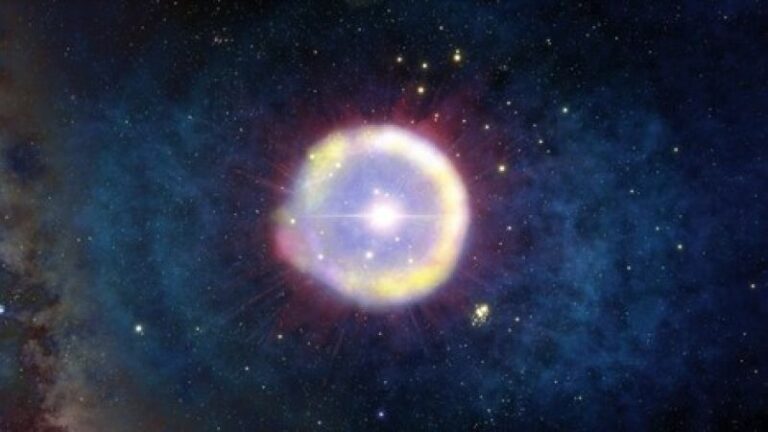An oxygen signal dating back 13.3 billion years suggests the formation of a star occurred a mere 250 million years post-Big Bang.
The Atacama Large Millimeter/submillimeter Array or ALMA is not your normal telescope that you would imagine. Rather, ALMA situated in the Atacama Large Millimeter/submillimeter Array in northern Chile’s Atacama Desert is a radio telescope made up of 66 highly accurate stations that function as one unit. Depending on how the 7 to 12 meters wide antennas of ALMA are grouped, it may focus on some of the farthest known objects in the universe and record images that are clearer than those taken by the Hubble Space Telescope.
First starlight
This wonderful array was utilized by an international team of astronomers in a research carried out in Nature to examine MACS1149-JD1, an extremely remote galaxy. The team could barely believe that it is finding slight IR indications of ionized oxygen radiated roughly 13.
The universe is assumed to have been formed 13 billion years ago or specifically 10-11 billion years after the big bang and life is believed to have evolved 3 billion years ago. What is most striking is that this is not only the farthest oxygen signal ever identified by any observatory, but also the conclusive evidence that stars started to form just 250 million years after the big bang, when the universe was only 2% of its current age. Originally the Universe was devoid of anything that someone might consider interesting: before the first stars there was nothing but radiation from the Big Bang, hydrogen, helium and a pinch of lithium.
After this, the discovery seems to have been missing until the first stars where many of the heavier elements that we use often today (like carbon and oxygen ) did not exist. They do this because stars are the flaming crucibles that transform its hydrogen and helium into bigger elements and without them there is no oxygen. “I was over the moon to find the signal of the remote oxygen in the ALMA data,” said the study’s lead author, Takuya Hashimoto, a researcher of Osaka Sangyo University and the National Astronomical Observatory of Japan in the statement. On that account, it could be argued that this detection has expanded the frontiers of the observable universe. ’Of all the questions that interest astronomers, the earliest time when galaxies came into existence out of thick darkness is probably the most fascinating.
This time is called ‘cosmic dawn,’ and is most intriguing, as during this epoch, the structure of the universe transformed from the hot, dense, and nearly uniform, to the populated community of stars and planets, clouds of glowing gas and dust and people. “Specifically identifying when cosmic dawn happened has been compared to finding the grail of cosmology and galaxy formation,” informed Richard Ellis, astronomer at University College London and also a co-author of the study, in his statement to the media. “With these latest MACS1149-JD1 measurements: we are inching toward witnessing the start of starlight! As cognized beings made of stardust, this is really recalling our genesis. ”
Do not forget to share your opinion with us to provide you with the best posts !




0 Comments